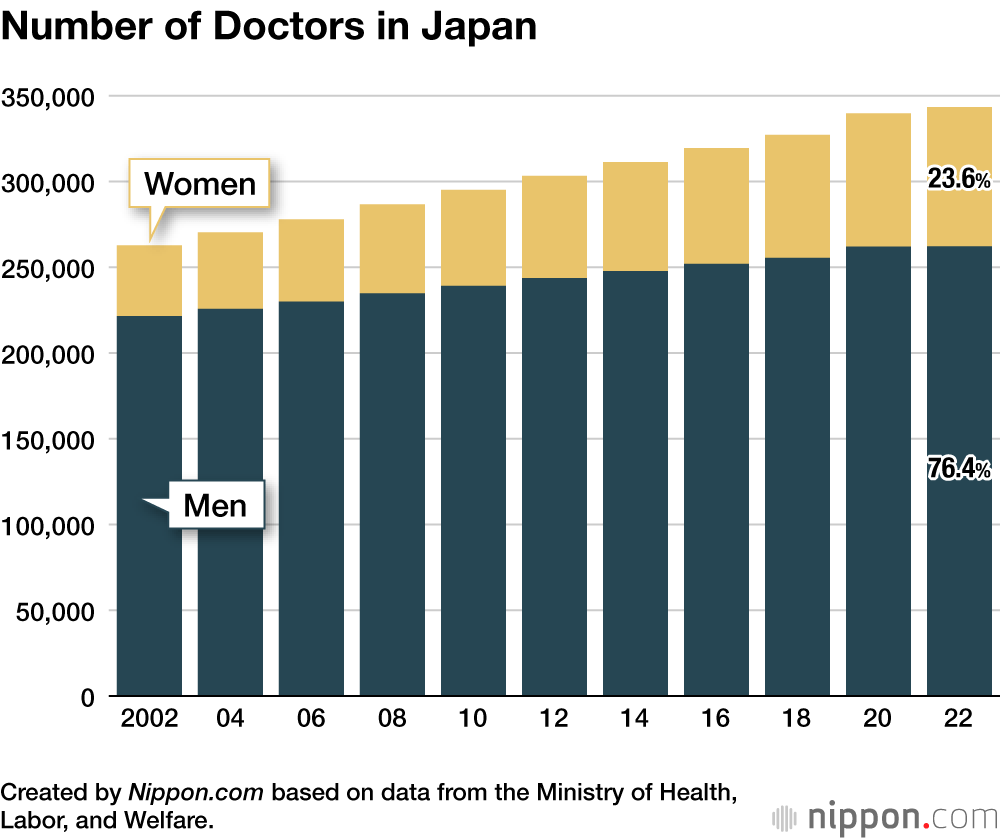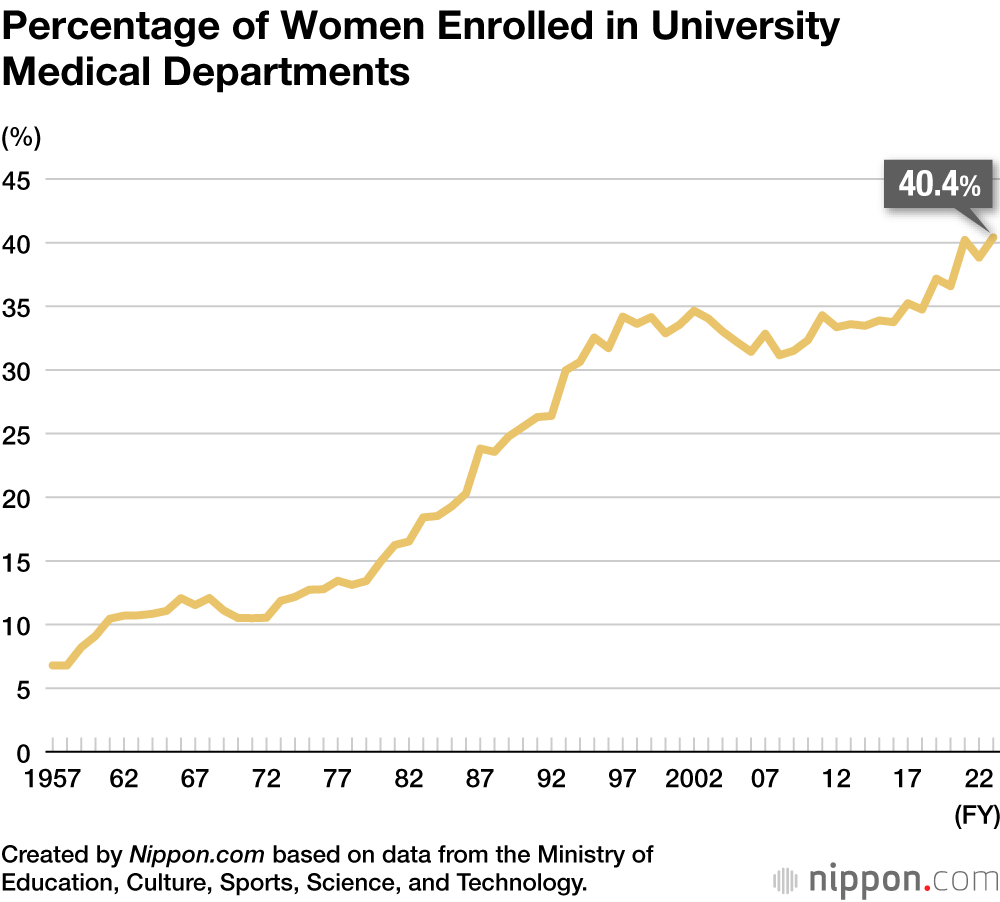
Record 80,000 Female Doctors in Japan, but Huge Gender Gap Remains
Gender and Sex Work- English
- 日本語
- 简体字
- 繁體字
- Français
- Español
- العربية
- Русский
The Ministry of Health, Labor, and Welfare announced that at the end of December 2022, the number of female doctors exceeded 80,000 for the first time. It was an increase of 4.6% since the previous survey in 2020 and marked the highest figure since the current type of survey started in 1982.
According to the ministry, the total number of doctors in 2022 increased by 1.1% from the previous survey to 343,275, the highest on record. Of those, 81,139 were female doctors, accounting for 23.6% of the total. With 76.4% being male, there is still a very visible gender gap.
The MHLW stated that “the increase in female doctors is linked to the fact that the ratio of women being admitted into medical school has been increasing year on year since 2008.”
Record highs were also seen for the number of female dentists, rising by 1.9% to 27,413, and female pharmacists, up 0.9% to 199,507.
Meanwhile, an independent examination by Nippon.com of data from the Basic School Survey, published by the Ministry of Education, Culture, Sports, Science, and Technology (MEXT), showed that women accounted for 40.4% of the enrollments at medical departments of national, public, and private universities in fiscal 2023. The total number of students enrolled in medical departments in fiscal 2023 was 9,007, of which 3,640 were women.
A careful examination of the data since 1957 reveals that from the 1960s through the 1970s, the percentage of female enrollment stayed low, in the 10% range. The 1980s saw the beginning of a discernible rise, with the percentage exceeding 20% in fiscal 1986. In fiscal 1994, the percentage reached 30%, but it remained between 30% and 40% for around 25 years.
Women’s enrollment in university medical departments became a social issue in 2018, when investigation into a corruption case involving Tokyo Medical University and MEXT led to the discovery that a number of departments had uniformly treated women unfairly in their entrance exams.
(Translated from Japanese. Banner photo © Pixta.)


